
THINKING THROUGH KIERKEGAARD
2005 by Peter J. Mehl
All rights reserved
Manufactured in the United States of America
 This book is printed on acid-free paper.
This book is printed on acid-free paper.
C 5 4 3 2 1
Library of Congress Cataloging-in-Publication Data
Mehl, Peter J. (Peter John), 1956
Thinking through Kierkegaard : existential identity in a pluralistic world/Peter J. Mehl.
p. cm.
Includes bibliographical references and index.
ISBN 0-252-02987-9 (alk. paper)
1. Kierkegaard, Sren, 18131855. I. Title.
B4377.M44 2005
198.9dc22 2004021718
To Shelley, Rachel, and Maggie, my girls
The struggle itself toward the heights is enough to fill a mans heart. One must imagine Sisyphus happy.
Camus, The Myth of Sisyphus
Preface
My relationship with Kierkegaard is like my relationship with my wife. I fell in love with her as an undergraduate. Over time our differences began to surface but we had developed a bond of mutuality and affection and had influenced each other in ways that now constitute each of us. Even further down the road we have had deeper ups and downs, sometimes more engaged with one another, sometimes less. But we have not divorced and I do not think that we could. Our relationship remains central to each of us. Our relationship has spawned other events: children, social projects, career shifts and advances, new adventures. She is part of who I am; this book is dedicated to her and to our daughters. So too has my relationship with Kierkegaard gone: until it is now a mutually critical partnership. We will never divorce and I do not think we could. He will always be with me, yet he is not as immediately infatuating as he initially was. He now occupies a place in my consciousness that is pervasive but not all consuming.
As my thinking has developed, I have come to see problems and perils in the Kierkegaardian perspective. Many Kierkegaardians, scholars of the master, have developed very lucid and accurate explications of his thought. Yet they do not often consider his thought critically; they do not look comparatively at thought that poses a serious challenge to Kierkegaards. This book poses some serious questions for some Kierkegaardians. Kierkegaardians who struggle with and follow the contemporary discussions about moral and religious identity, about existential and spiritual issues in a pluralistic world, and who see Kierkegaard as providing positive resources or even as solving these struggles will be interested. Other Kierkegaardians, who see themselves firmly with the hermeneutical circle of the orthodox Christian tradition, will have less interest. As well, this project is not a complete analysis of Kierkegaards works; many important works are not discussed at all. Rather, it is a selective analysis in the interests of thinking about a Kierkegaardian approach to existential identity and how this approach fares in terms of certain strands of contemporary thought, especially more pragmatic and contextualist veins. If the widespread interest in Alasdair MacIntyres, Richard Rortys, and Charles Taylors works, or more popular works such as Robert Bellah et al.s Habits of the Heart or Marcus Borgs Meeting Jesus Again for the First Time, is any guide, even those with only marginal interest in Kierkegaard may find my project of interest. And I hope that students new to the writings of Kierkegaard, and thinking about existential issues in their own lives, will find this work engaging. Of course, in many respects I write about struggles and questions I have posed for myself, and I must wrestle existentially with the questions, since I am, after a fashion, a Kierkegaardian too. And is not the existential (and not the scholarly commentary) what Kierkegaard thought life was about anyway? This book is a result of some of my reflections; the existential, however, is for me alone.
This book draws on ideas from several papers published over the last few years. I thank the journal publishers for permission to utilize ideas that first saw public light in their publications:
Kierkegaard and the Relativist Challenge to Practical Philosophy, Journal of Religious Ethics 14.2 (1986): 24778; reprinted with a new postscript in Kierkegaard after MacIntyre, edited by John J. Daven-port and Anthony Rudd (Chicago: Open Court/Carus, 2001), 338.
In the Twilight of Modernity: MacIntyre and Mitchell on Moral Traditions and Their Assessment, Journal of Religious Ethics 19.1 (Spring 1991): 2154.
Despairs Demand: An Appraisal of Kierkegaards Argument for God, International Journal of Philosophy of Religion 32 (1992): 16782 (reprinted with the kind permission of Kluwer Academic Publishers).
Moral Virtue, Mental Health, and Happiness: The Moral Psychology of Kierkegaards Judge William, in International Kierkegaard Commentary: Either/Or, vol. 2, edited by Robert L. Perkins (Macon, Ga.: Mercer University Press, 1995), 15582.
Matters of Meaning: Authenticity, Autonomy, and Authority in Kierkegaard, Philosophy in the Contemporary World 4.12 (SpringSummer 1997): 2732.
Edifying Hermeneutics: Kierkegaards Existential Method and Its Limits, in Kierkegaard and the Word(s): Essays on Hermeneutics and Communication, edited by Gordon D. Marino and Poul Houe (Copenhagen: Reitzel, 2003), 4959, first presented at the Fourth International Kierkegaard Conference, June 2001, at the Howard V. and Edna H. Hong Kierkegaard Library on the campus of St. Olaf College.
The first chapter sketches my questions and my argument against the background of contemporary historicist and pragmatist thought. Then I look closely at selected writings of three main pseudonyms: Judge William, the pseudonym of the second volume of Either/Or (1843) and his letter entitled The Balance between the Esthetic and the Ethical in the Development of the Personality, Johannes Climacuss dialectics as they are found in the Concluding Unscientific Postscript (1846), and the edifying reflections of Anti-Climacus in The Sickness unto Death (1849). In and less moralistic vision of our search for moral and spiritual meaning. I try to state concisely the key features of my reconstructed more pragmatic Kierkegaardian vision of human existential identity. I consider how Kierkegaard defends his vision of the normatively human and how we should judge it today. Throughout, I weave in my criticisms and my suggestions for reconstruction.
Someone asked me recently how and when I encountered Kierkegaard. Although I am not sure, my first memory is struggling to understand the turgid opening passages in The Sickness unto Death and reading the rich typology of moral postures he unfolds thereafter with a genuine sense of discovery; I was sure I saw people I knew in the conditions he described. This was before I began my formal study of philosophy and religion. I did not take a course on Kierkegaard or on existentialism in college but Kierkegaards views (as I had come to know them through my reading and other courses) stuck with me until it was time to write a masters thesis, and Kierkegaard was my choice. So one of my first debts of gratitude goes to my M.A. advisor at Ohio University, the now deceased Stanley Grean. George Weckman and David Stewart also provided valuable insight and advising, and Gene Blocker encouraged my interests in existential thought all along. At the University of Chicago, under the influence of Don Browning, my interests moved toward ethics and the psychology of Erik Erikson. Don encouraged me to wed these interests to my interest in Kierkegaard and to a growing interest in William James and American philosophy. In a seminar on rationality and relativism with Robin Lovin, I encountered MacIntyres
Next page


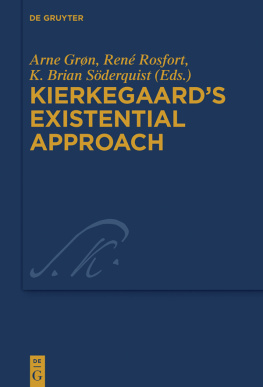
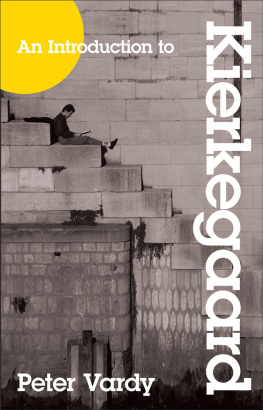
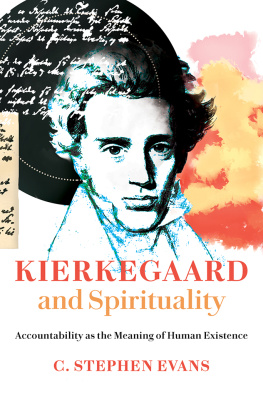
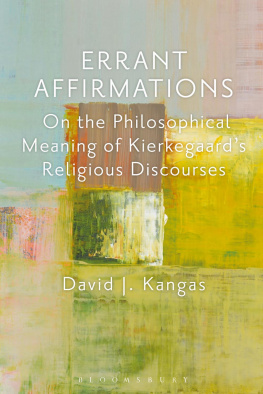

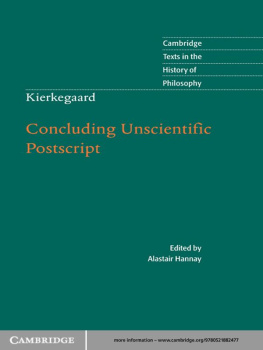
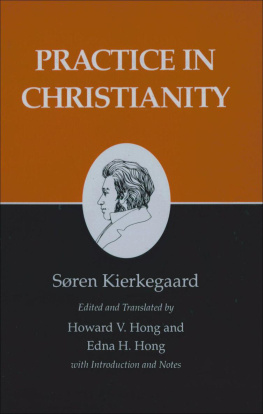

 This book is printed on acid-free paper.
This book is printed on acid-free paper.